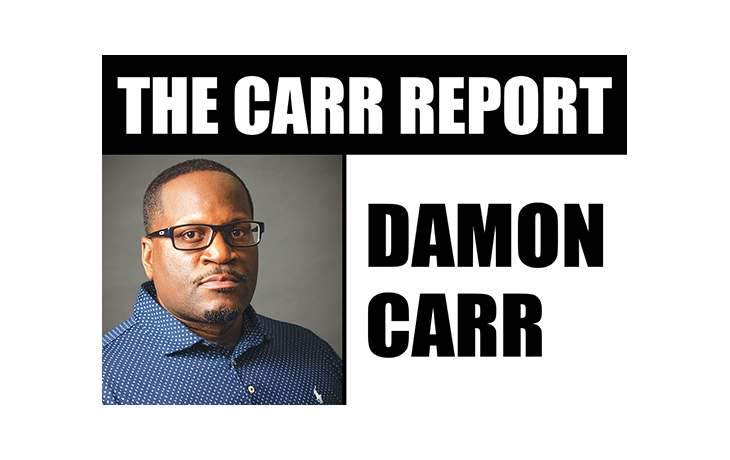on
by Damon Carr
I recently received an inbox message from a tax client and soon-to-be financial planning client of mine: “Gm! You’re my finance guy, so I can show you this! This makes me SO happy!!!! I wish more people would do it!”
Included with this message was a copy of an annual account statement from her Thrift Saving Plan (TSP). What was awe striking about this annual account statement was the current balance. The balance in her Employee Sponsored Retirement Plan was an astounding $414,182.56.
According to Yahoo Finance, only 18 percent of retirees have $400,000 or more in their retirement account. Her balance in her retirement account is upwards of $400,000 and she’s not even retirement age yet. Seeing her statement made me smile because, like her, I wish more people will knuckle down and get serious about their money. For, if you’re not serious about your money, you’ll never have serious money.
Her story is inspiring because if a single mom with no help, living in a high cost area, who has never earned six figures in her working career could amass nearly a half million dollars into her retirement savings account, anyone can do it. I asked her to share her story of how she managed to save $400,000 into her retirement plan. I shared her story on Facebook. It received lots of reactions and comments. In this article I’m going to share some of the comments and some of my responses. Before I share these comments, I’d like to explain what a TSP is.
A TSP is a retirement savings plan for federal employees, including members of the uniformed services. It is similar to a 401(k) plan in the private sector. Employees can contribute a portion of their salary to the TSP, which is invested in various fund options. Like a 401(k) plan, the contributions are tax-deferred, meaning you don’t pay taxes on them until you withdraw the money in retirement. The TSP offers low fees and a range of investment options to help employees grow their retirement savings.
In my Montell Jordan voice: “This is how she did it!!”

Client: I was with my employer for about 2-3 years when a co-worker told me about the Thrift Saving Plan. I’d never heard of it and can’t tell you HOW he convinced me to join, but I’m glad I did. Kind of annoyed that I missed those early years to contribute, but I think I still made out pretty good.
As soon as you’re eligible to contribute, I encourage everyone to do so. I’d begin with no less than a 10 percent contribution. Might sound steep, but you WILL be thankful in the long run. I allocated the majority to the G Fund (U.S. Treasuries). I did this because I was scared of stocks. This is a safe investment. I allocated a very small percentage to the C Fund (U.S. Stocks). My employer matched my contributions $1 for $1 up to 5 percent. With every promotion, I contributed more and more until I maxed out my percentage at 15 percent (about 4 years ago). I continue to invest 15 percent of my salary to my Thrift Saving Plan today.
Damon says: Do you mind if I share a hypothetical that has me sitting here with my stomach twisted. It may do the same to your stomach.
Client: Please share. I’m scared but please share.
Damon says: No. You’re not going to lose money. You played it really safe.
I want to emphasize what you did is amazing! Less than 18 percent of Americans have amassed $400,000 in retirement savings. You’re that chick!
When it comes to returns on investment, asset allocation is paramount because 90 percent of your investment returns have to do with your asset allocation. In your case, the asset allocation is 94 percent in G-Fund (U.S. Treasury Securities). This is a very conservative investment with very conservative returns. The average return in the G-Fund over the last 30 years has been 4.2 percent.
Let’s compare and contrast the G Fund to the C Fund. The C-Fund mimics the S&P 500. The S&P 500 is a broad market index made up of 500 of America’s biggest and brightest companies. Most of the big companies we use, hear and read about are included in the S&P 500 including Facebook, Apple, Microsoft, Tesla, Nvidia, Sam’s Club, Walmart, Johnson and Johnson, AT&T, Verizon, JP Morgan Bank, Bank of America, etc. Companies we know, trust, use and love. The average return on the C Fund over the last 30 years is 12.2 percent.
I would have recommended you allocate more than 6 percent to the C Fund. Being that you’re a conservative investor, I would have suggested 50 percent to G Fund and 50 percent to C Fund. Without crunching numbers Let’s just say $800,000 is a good estimate of what that balance could have been.
I wonder how she has her account allocated. I’m getting a 11.88 percent rate of return.
~ N.G.
Damon says: N.G., I’ll go on record and say that she is a conservative investor.
She valued safety over high return on investment. Her overall rate of return was less than 11 percent. What’s instructive here is that the saving rate is just as important if not more important the return on investment.
She started out with a saving rate of 10 percent of her income. She increased it as she got job promotions and pay raises. Her savings rate is currently 15 percent of her income.
As we seek to maximize our return on investment, let us gradually maximize our saving rate as well. Her employer matched up to 5 percent. Many people will stop at the match. She continued to save up to 15 percent or 10 percent more than the match.
You can purchase a home with retirement funds, typically without penalty.
~Janeen
Damon says: There’s a saying amongst investment brokers. “You can’t eat your house!” They’d encourage one to leave that money invested.
If you talk to a real estate broker, they’d say use retirement savings to buy the house, then take what would have been your mortgage payment and invest it.
Here’s the problem I have with the advice from both. They’re both biased! Leave the money invested, stockbrokers continue to earn commission on the Assets Under Management. If you withdraw the money and purchase a house, you speed up the process for real estate brokers to close on the real estate deal and earn a commission.
There’s a saying amongst unbiased financial professionals, “Brokers get richer and richer while their clients get broker and broker.”
Having worked on both sides in addition to being a tax professional, I’m reluctant to advise one to use their retirement nest egg to purchase a home.
I’m of the opinion that retirement savings should serve its intended purpose—RETIREMENT!
Although there’s no tax penalty on withdrawals from your retirement plan to purchase a home, withdrawals from retirement accounts do create a taxable event — meaning withdrawal from traditional retirement accounts are taxed as ordinary income. When added to other income sources for the year, it subjects one to a higher tax bracket. If investment funds are outside of a retirement account, it makes sense to use those funds to purchase a home.
(Damon Carr, Money Coach can be reached at 412-216-1013 or visit his website at www.damonmoneycoach.com)
Join our email list to stay connected.






